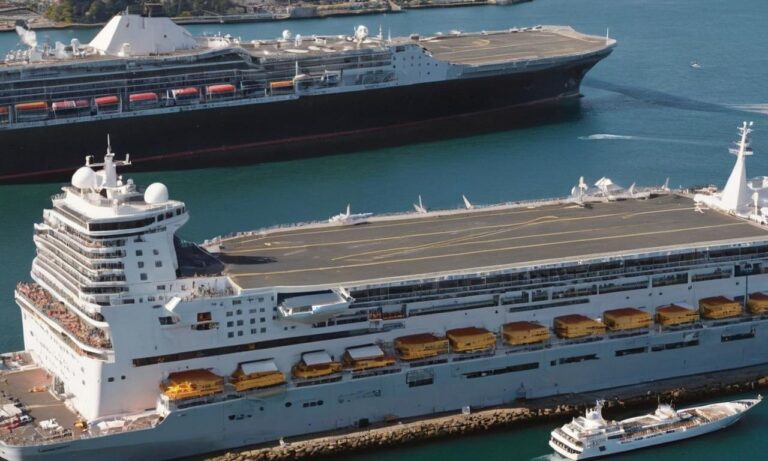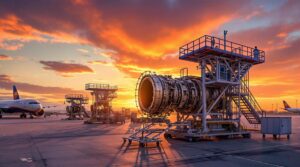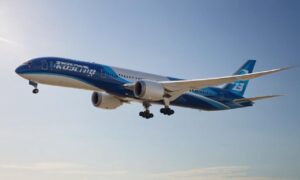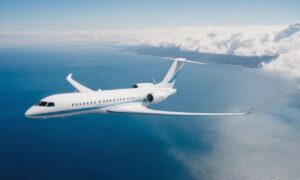When it comes to vessels that dominate the open seas, two titans stand out in their own right—the aircraft carrier and the cruise ship. While both are marvels of engineering and design, their purposes, sizes, and functionalities diverge significantly, creating a stark contrast in the maritime world.
The Aircraft Carrier: A Floating Fortress
At the forefront of naval power projection, the aircraft carrier serves as a mobile airbase on the water. With a primary mission of deploying and recovering aircraft, these colossal vessels play a crucial role in projecting force and securing strategic interests. Measuring several hundred feet in length, aircraft carriers are often considered the undisputed giants of the seas.
Equipped with a formidable array of weaponry and a fleet of aircraft, an aircraft carrier is essentially a floating city with a sovereign capability to project air power across vast distances. The sheer size and capability of these vessels make them a symbol of military strength and technological prowess.
The Cruise Ship: A Seafaring Pleasure Palace
In stark contrast to the military might of an aircraft carrier, a cruise ship is designed for leisure and luxury. Cruise ships, often resembling floating resorts, are intended to provide passengers with an unforgettable vacation experience. These vessels boast amenities ranging from theaters and swimming pools to gourmet dining and spa facilities.
While cruise ships may lack the imposing presence of military firepower, their immense size is still noteworthy. These floating cities can host thousands of passengers and crew members, making them a marvel of maritime architecture and engineering. The focus on comfort, entertainment, and relaxation sets cruise ships apart from their more formidable counterparts.
Comparative Dimensions
When comparing the size of an aircraft carrier and a cruise ship, it’s important to consider various aspects. While aircraft carriers are generally longer and wider due to the necessity of accommodating large aircraft, cruise ships compensate by having more decks and a greater overall volume to house amenities and cabins for passengers.
Additionally, the displacement of water—indicative of a vessel’s weight—varies significantly between the two. Aircraft carriers, laden with military equipment and aircraft, tend to have a much higher displacement compared to cruise ships. This stark difference in purpose and payload reflects in their respective dimensions.
In the realm of maritime marvels, the aircraft carrier and cruise ship stand as polar opposites, each commanding attention for different reasons. The former, a symbol of military prowess, projects power across the oceans, while the latter, a floating paradise, offers a luxurious escape on the high seas.
Understanding the distinctions in size, purpose, and functionality between these two giants of the water is essential for appreciating the diversity that exists in the world of maritime engineering. Whether it’s the strategic might of an aircraft carrier or the opulence of a cruise ship, both vessels showcase the ingenuity and capabilities of humanity in conquering the challenges of the open sea.
Environmental Impact: A Sea Change in Consciousness
Beyond their sheer size and functionality, a critical aspect that sets aircraft carriers and cruise ships apart is their environmental impact. While cruise ships have faced scrutiny for their carbon footprint and waste management, aircraft carriers, too, contribute to ecological concerns.
The comparison extends to the propulsion systems, fuel types, and waste disposal practices employed by these vessels. Understanding their environmental implications sheds light on the challenges and innovations within the maritime industry to mitigate the ecological consequences of large-scale seafaring.
Propulsion Systems and Fuel Efficiency
When it comes to powering these maritime behemoths, aircraft carriers often rely on nuclear propulsion, emphasizing endurance and operational range. In contrast, cruise ships commonly utilize conventional engines, raising questions about fuel efficiency and emissions. Exploring the choices made in propulsion systems provides insights into the environmental considerations of these titans of the sea.
Waste Management Strategies
Addressing the waste generated during voyages is a shared concern for both aircraft carriers and cruise ships. The methodologies employed for waste disposal, recycling, and environmental stewardship vary widely. Examining their waste management strategies unveils the challenges faced by these vessels in maintaining a balance between operational needs and environmental responsibility.
Frequently Asked Questions
| Question | Answer |
|---|---|
| 1. How do aircraft carriers generate power? | Aircraft carriers often use nuclear propulsion systems to generate power, providing an extended operational range. |
| 2. What is the primary fuel source for cruise ships? | Cruise ships commonly rely on conventional engines powered by marine diesel or liquefied natural gas (LNG). |
| 3. Are there efforts to make these vessels more environmentally friendly? | Yes, ongoing efforts within the maritime industry aim to enhance the environmental sustainability of both aircraft carriers and cruise ships, addressing issues such as emissions and waste management. |
Conclusion
From the vast oceans they navigate to the environmental considerations they evoke, aircraft carriers and cruise ships present a multifaceted panorama of challenges and innovations. Beyond their physical dimensions, understanding the ecological impact and ongoing efforts toward sustainability adds a layer of complexity to the narrative of these maritime giants.






